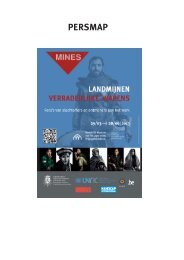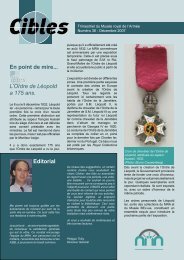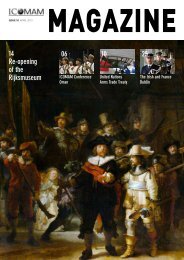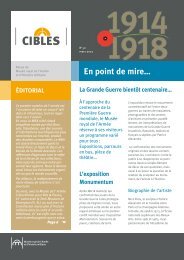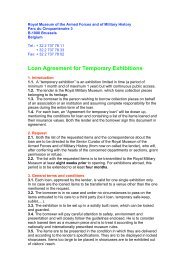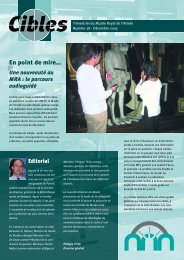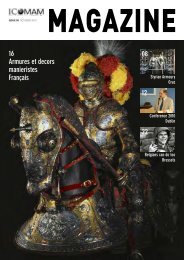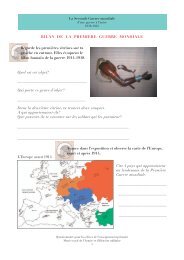(High resolution) April 2011 (PDF
(High resolution) April 2011 (PDF
(High resolution) April 2011 (PDF
You also want an ePaper? Increase the reach of your titles
YUMPU automatically turns print PDFs into web optimized ePapers that Google loves.
Articles<br />
Art of the possible: Transforming the<br />
permanent displays at the Higgins Armory<br />
Museum, part 1<br />
Jeffrey Forgeng<br />
The permanent exhibits at the<br />
Higgins Armory in Worcester,<br />
Massachusetts, were installed in the<br />
1980s; they represented a major<br />
achievement for the institution at the<br />
time, but after a quarter of a century<br />
they are naturally in need of updating.<br />
Making this happen, here as<br />
elsewhere, is a challenge constrained<br />
by finances (in 2010 the museum had<br />
an exhibits budget of $0), display<br />
space (the museum’s medieval-style<br />
Great Hall is a spectacular setting to<br />
display suits of armor, but is less<br />
hospitable to individual armor<br />
elements), and of course the profile of<br />
the collections themselves.<br />
Beginning in 2009, the museum<br />
initiated a series of projects to revamp<br />
self-contained areas adjacent to the<br />
Great Hall with exhibits on Knights,<br />
Non-European Arms, and Swords. Two<br />
of these projects are complete, and<br />
the third will be finished within the<br />
next few months. While these new<br />
displays leave the main area of the<br />
Great Hall untouched, they are already<br />
having an impact on the visitor<br />
experience well beyond the space and<br />
money that were allocated to them.<br />
Visitors perceive the Higgins<br />
Armory as a ‘museum of knights’ and<br />
a ‘museum of the Middle Ages,’ a fact<br />
familiar to us anecdotally and<br />
confirmed by a series of visitor<br />
interviews undertaken at the outset of<br />
these projects to help determine their<br />
direction. Yet prior to 2009, our<br />
exhibits had virtually nothing to say<br />
about knights, and only a handful of<br />
our displayed objects were actually<br />
from the Middle Ages. We therefore<br />
decided to deinstall our four ‘Timeline<br />
of Armor’ vitrines and replace them<br />
with displays focusing on knights:<br />
‘Days of Knights’ (a chronology of<br />
knights), ‘Knight Life’ (chivalric and<br />
courtly life), ‘Cutting Edge’ (weapons),<br />
and ‘Dressed to Kill’ (armor).<br />
While each vitrine was organized to<br />
tell a coherent story, the display was<br />
designed in the knowledge that the<br />
visitor experience is chiefly organized<br />
around the objects themselves. This<br />
installation allowed us to display star<br />
pieces from the collection that had<br />
hitherto received little exposure in the<br />
harness-oriented environment of the<br />
Higgins, including a significantly<br />
increased number of medieval<br />
artifacts, as well as important objects<br />
acquired through the acquisitions<br />
program initiated by Walter Karcheski<br />
in the 1990s.<br />
Readers familiar with the Higgins<br />
may recall the rather mysterious<br />
alcoves between the Timeline vitrines.<br />
These had been built to house<br />
audiovisual content, but this plan had<br />
ISSUE 06 MAGAZINE 45



